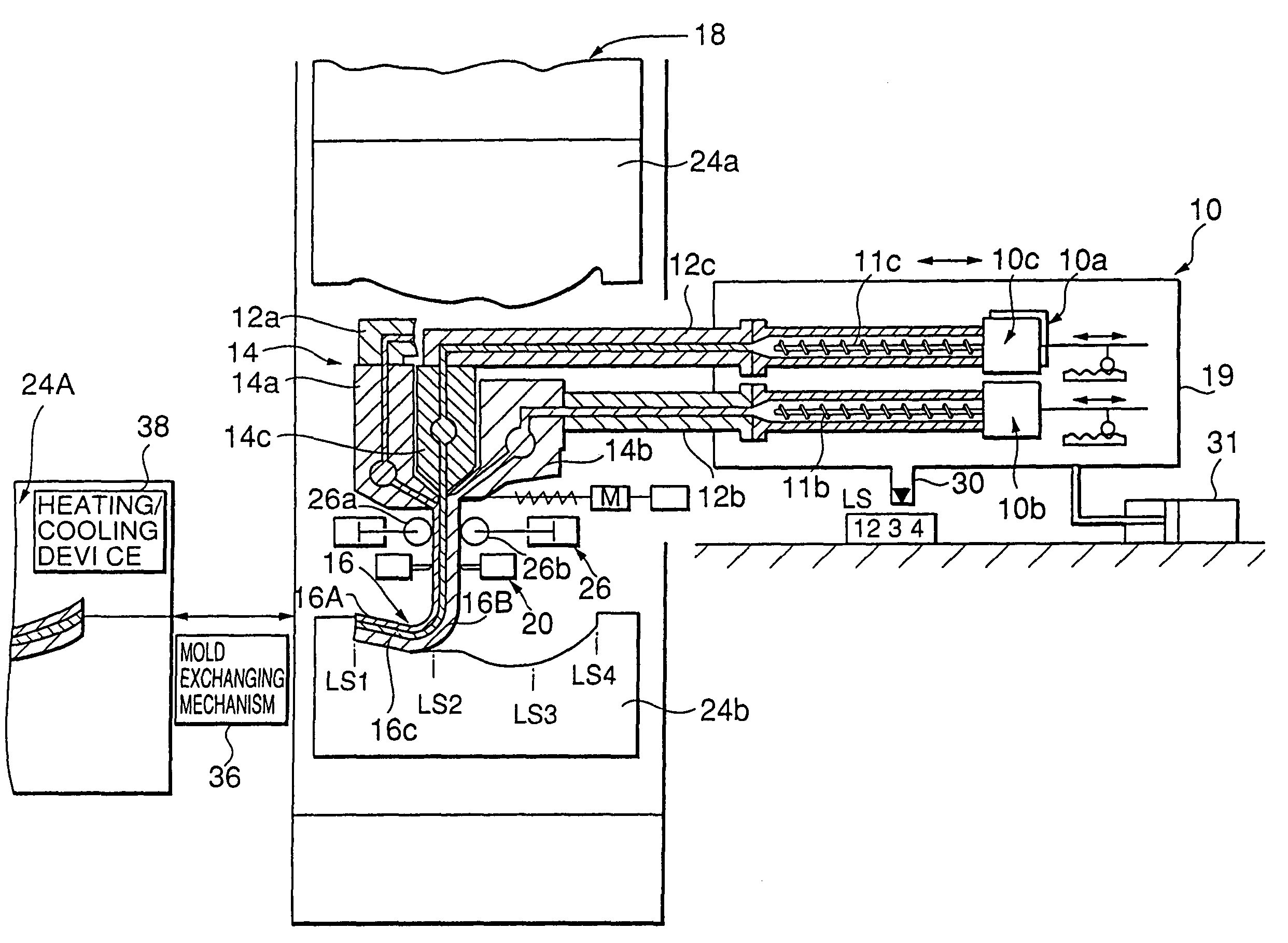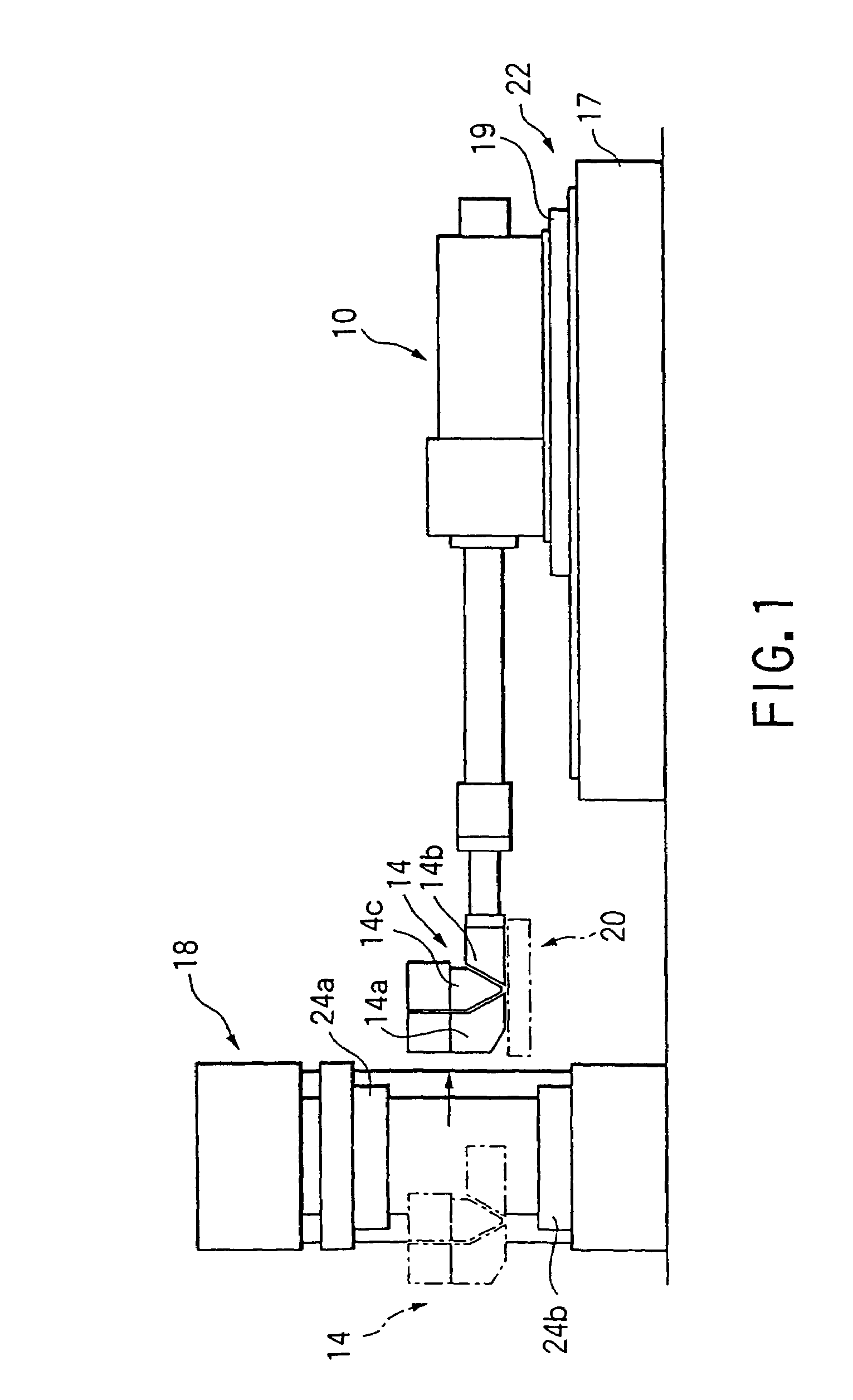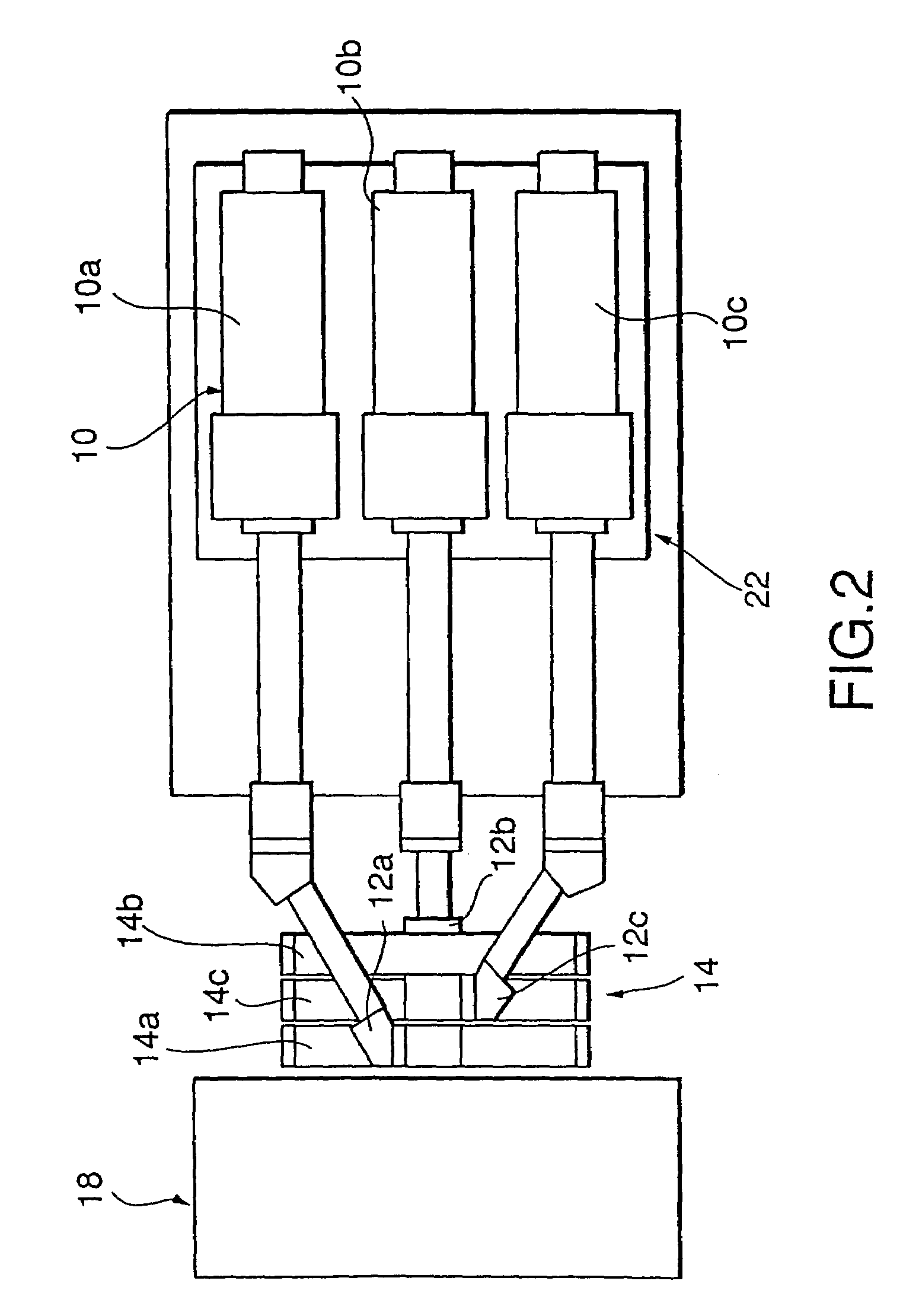Method of manufacturing a molded multilayer article
a multi-layer article and manufacturing method technology, applied in the field of manufacturing a multi-layer article, can solve the problems of limited shapes of products to be processed, increased heating process electric power consumption, and difficulty in controlling the respective temperature of the monolayer sheet individually. , to achieve the effect of high manufacturing efficiency
- Summary
- Abstract
- Description
- Claims
- Application Information
AI Technical Summary
Benefits of technology
Problems solved by technology
Method used
Image
Examples
Embodiment Construction
[0055]Methods of manufacturing a molded multilayer article and apparatus therefor in accordance with the present invention will be described hereinafter with reference to the accompanying drawings.
[0056]1. Molded Multilayer Article Manufacturing Apparatus
[0057]FIGS. 1 to 7 show a molded multilayer article manufacturing apparatus in a first embodiment according to the present invention. The firs embodiment will be described as applied to manufacturing a molded article with three layers. Numeral 10 represents a plastication means for plasticating a polymer material for each of the layers and applying pressure to each molten polymer to force it out. As shown in FIG. 2, an injection molding machine acting as the plastication means 10 is provided with three injection units 10a, 10band 10c disposed in a parallel arrangement. The injection units 10a, 10b and 10c have delivery nozzles 12a, 12b and 12c, which are connected to T dies 14a, 14b and 14c (a slot die is referred to as the T die 14...
PUM
 Login to View More
Login to View More Abstract
Description
Claims
Application Information
 Login to View More
Login to View More - R&D
- Intellectual Property
- Life Sciences
- Materials
- Tech Scout
- Unparalleled Data Quality
- Higher Quality Content
- 60% Fewer Hallucinations
Browse by: Latest US Patents, China's latest patents, Technical Efficacy Thesaurus, Application Domain, Technology Topic, Popular Technical Reports.
© 2025 PatSnap. All rights reserved.Legal|Privacy policy|Modern Slavery Act Transparency Statement|Sitemap|About US| Contact US: help@patsnap.com



